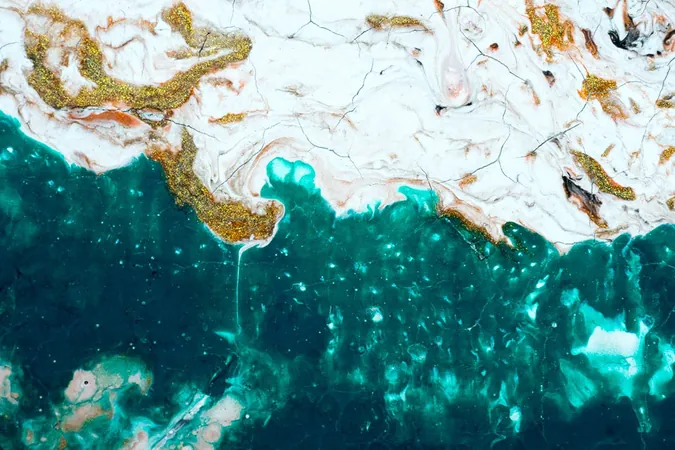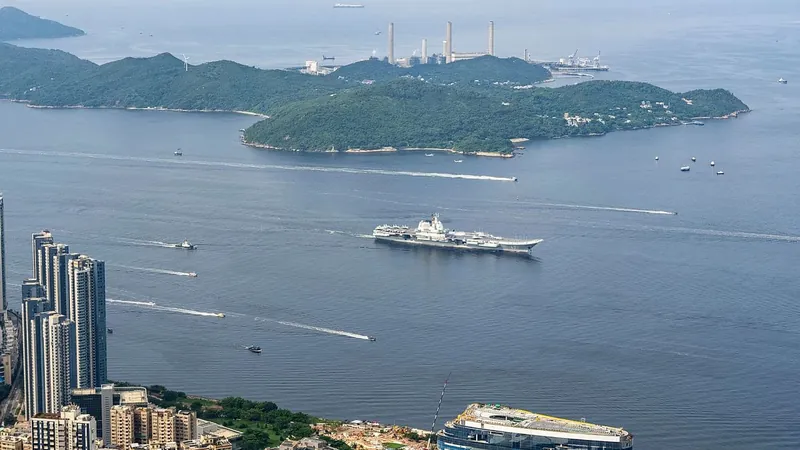
Unveiling the Secrets Beneath Greenland's Glaciers: Could This Discovery Change Our Understanding of Rising Sea Levels?
2025-01-08
Author: Ken Lee
Unveiling the Secrets Beneath Greenland's Glaciers: Could This Discovery Change Our Understanding of Rising Sea Levels?
In an exhilarating expedition, a team of scientists is delving deep beneath the Kangerlussuup glacier in western Greenland, led by Professor Ginny Catania from the University of Texas. This ambitious mission seeks to uncover vital insights into climate change and its global impact on rising sea levels, an urgent issue threatening coastal communities worldwide.
Exploring the Unseen Depths
This isn’t a typical research endeavor; it is a sophisticated operation leveraging state-of-the-art technology and expert navigational skills. Researchers are stationed aboard the Celtic Explorer, while an advanced submarine known as NUI (Nereid Under Ice) is tasked with investigating a massive underwater cavern detected through sonar imaging. Operating under extreme conditions akin to “driving in a blizzard in Buffalo, New York, while doing origami in the back seat at 62 miles per hour,” as described by the submarine’s pilot, Victor Naklicki, adds to the complexity of this mission.
The primary objective is to examine sediment mounds located at the glacier's base. These underwater formations have eluded close study due to hazardous currents and poor visibility caused by mud and silt. Researchers hypothesize that these sediment piles could play a vital role in mitigating sea-level rise by acting as “speed bumps,” shielding glaciers from the warmer ocean currents that threaten their stability.
Anticipating Groundbreaking Discoveries
The team harbors grand ambitions for this expedition. By approaching within 547 yards of these enigmatic sediment formations for the first time, they aim to gather pivotal data that could revolutionize our understanding of glacier dynamics and their implications for sea-level rise. This knowledge is especially critical considering that melting glaciers pose a significant risk to over a billion people residing in major coastal cities across the planet.
One of the major hypotheses being tested is whether these sediment piles could potentially prevent what Professor Sean Gulick describes as a “catastrophic retreat” of glaciers. Should this prove correct, it could transform our concepts of how natural barriers affect glacier behavior and slow their inevitable melting.
The Broader Implications for Climate Change
The results from this expedition could far exceed academic interests; they possess the potential to reshape how we understand climate change and its geographical ramifications. If sediment mounds indeed act as protective layers, it might alter our approach to managing rising sea levels effectively.
Experts warn that if Greenland's ice sheet were to disintegrate, global sea levels could surge by as much as 23 feet, dramatically reshaping coastlines worldwide. As Professor Catania emphasizes, some sea-level rise is unavoidable. Thus, it is imperative to prepare coastal regions—especially in less affluent nations—which may struggle to adapt due to limited resources.
A Call for Urgency and Action
This groundbreaking expedition lays bare the immediate need for action against climate change and its repercussions. As scientists work tirelessly to reveal the enigmas beneath Greenland’s icy façade, there remains an urgent call for coastal communities to implement projects aimed at reducing flood risks and safeguarding vulnerable populations against upcoming crises.
In conclusion, this mission signifies a monumental step forward in our ongoing battle with climate change. By probing the uncharted territories beneath Greenland's glaciers, scientists are forging pathways toward innovative solutions that may help shield future generations from the threats of rising seas. As we eagerly await more findings from this captivating expedition, we must also reflect on our role in maintaining our planet's delicate balance and consider how we can contribute to building a more resilient world for everyone.




 Brasil (PT)
Brasil (PT)
 Canada (EN)
Canada (EN)
 Chile (ES)
Chile (ES)
 Česko (CS)
Česko (CS)
 대한민국 (KO)
대한민국 (KO)
 España (ES)
España (ES)
 France (FR)
France (FR)
 Hong Kong (EN)
Hong Kong (EN)
 Italia (IT)
Italia (IT)
 日本 (JA)
日本 (JA)
 Magyarország (HU)
Magyarország (HU)
 Norge (NO)
Norge (NO)
 Polska (PL)
Polska (PL)
 Schweiz (DE)
Schweiz (DE)
 Singapore (EN)
Singapore (EN)
 Sverige (SV)
Sverige (SV)
 Suomi (FI)
Suomi (FI)
 Türkiye (TR)
Türkiye (TR)
 الإمارات العربية المتحدة (AR)
الإمارات العربية المتحدة (AR)